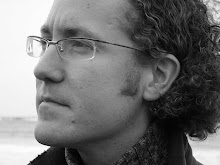My research on eye movement behaviour during film viewing and its relationship to editing style is mentioned (briefly) in the print edition of New Scientist this week (issue 2748) and on-line here
and here
The New Scientist article is in response to James Cutting's (Cornell) recent Psychological Science article on the 1/f structure in film editing. The scale of James' study is unbelievable. He and his collaborators basically created their own handcoded cinemetrics (http://www.cinemetrics.lv) database identifying every cut in 150 films! They then used this database to perform incredibly clever pattern analysis to look for repeating structures in adjacent shot lengths. They found that over the last 70 years Hollywood has been evolving towards a 1/f structure. I'll leave the technical explanation of what this means to James (below) but the basic gist is that shot lengths have begun to cluster in sequences of localised repeating lengths. Similar patterns have been observed in all aspects of nature such as tides, music, dance, the spatial frequency of the visual world, and neural firing rates. 1/f is thought by some to be a primitive pattern of processing in the human brain and influences attention fluctuation. James hypothesises that the adoption of a 1/f structure in editing structure may enable film to synchronise with viewer attention and create a more harmonious viewing experience. Of course, given that this was also the hypothesis I put forward in my Ph.D. thesis I am overjoyed by James' finding :) Let's hope this ushers in a new era of mathematically advanced cinemetrics and introduces more people to the area of Cognitive Film Theory.
Attention and the Evolution of Hollywood Film
James E. Cutting, Jordan E. DeLong, and Christine E. Nothelfer
Psychological Science (in press)
Reaction times exhibit a spectral patterning known as 1/f, and these patterns can be thought of as reflecting time-varying changes in attention. We investigated the shot structure of Hollywood films to determine if these same patterns are found. We parsed 150 films with release dates from 1935 to 2005 into their sequences of shots and then analyzed the pattern of shot lengths in each film. Autoregressive and power analyses showed that, across that span of 70 years, shots became increasingly more correlated in length with their neighbors and created power spectra approaching 1/f. We suggest, as have others, that 1/f patterns reflect world structure and mental process. Moreover, a 1/f temporal shot structure may help harness observers’ attention to the narrative of a film.



